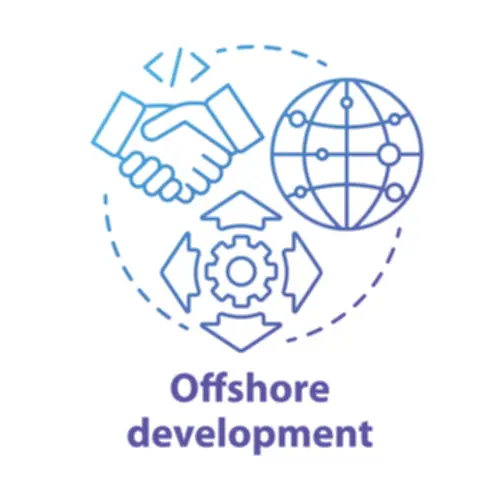What’s Alm? Application Lifecycle Management Explained
They help teams collaborate effectively, track progress, and ensure the delivery of high-quality software program artificial general intelligence functions. The term ALM stands for the that means and function of the acronym, as it defines the concept of managing the complete lifecycle of an utility. In the context of software development, ALM emphasizes the need for a scientific approach to managing and coordinating totally different phases of the software program development course of. This includes necessities administration, design, coding, testing, deployment, operation, and maintenance.
ALM is a broader term that includes planning, creating, deploying and optimizing an utility. One of the main advantages of utilizing ALM instruments is their capacity to provide a centralized platform for managing all aspects of the application’s lifecycle. This signifies that builders, testers, project managers, and other stakeholders can entry and share data in a single location, making it easier to track progress, resolve issues, and collaborate effectively. ALM instruments additionally allow for higher visibility and transparency, enabling teams to identify bottlenecks, prioritize duties, and make knowledgeable selections throughout the event process.
The significance of ALM lies in its function of providing a structured approach to the software program growth lifecycle. By following ALM practices, organizations can make certain that software initiatives are effectively managed, with clear goals and well-defined processes. In conclusion, ALM is an abbreviation that stands for Application Lifecycle Administration. It refers back to the administration of applications from conception to retirement and encompasses various activities associated to software program development. ALM performs a crucial function in making certain the successful completion of software program initiatives and the delivery of high-quality applications. It refers to a set of practices and instruments utilized in software program growth to manage the complete process from conception to retirement.
To summarize, ALM is an abbreviation that stands for Utility Lifecycle Administration. It is a complete method to software program development that encompasses varied stages and processes. ALM plays a crucial role in improving project efficiency, quality, and collaboration. It supplies tips and best practices, guaranteeing a standardized and structured strategy to software program growth. The greatest difference is that, whereas ALM applies to software, PLM applies to bodily hardware.
Its major function is to streamline and optimize the software program development process, permitting corporations to deliver high-quality purposes in a timely manner. When managing project timelines with ALM, it could be very important have a clear understanding of what the time period means and the way what is alm it’s associated to project management in general. ALM stands for Application Lifecycle Administration, which is an abbreviation referring to the administration of the complete lifecycle of a software software. It encompasses all the activities and processes concerned in the improvement, testing, deployment, and upkeep of the appliance.
Examples Of Alms In A Sentence
Specifying necessities normally happens top-down, that means the needs start with probably the most common and move into the more specific and detailed. As a outcome, case requirements are sometimes in a hierarchical tree construction, with every node representing a extra particular sub-requirement for a more common parent node. Nonetheless, other improvement approaches, such because the iterative Agile growth course of, use much less hierarchical structures to record necessities, with the outlined wants identified as use instances. ALM supplies a framework for setting requirements and establishing processes, governance and methodologies before deploying software.
In the context of software development, ALM encompasses every thing associated to the event, testing, deployment, and upkeep of purposes. The course of provides a software program growth framework while helping organizations manage their software program over its lifecycle. Both TDD and CI are intently related and are sometimes used together within the context of ALM. ALM, or Application Lifecycle Administration, refers back to the management of software growth processes from start to end. TDD and CI play crucial roles on this process by providing reliable automated tests and making certain the graceful integration of code modifications. In the context of ALM, the identification and prioritization of software program requirements serve the aim of providing a clear understanding of what the software should accomplish.

For instance, the applying requirement for consumer entry can have the technical requirement of password encryption. The bank’s cell software team makes use of a cloud server to host the applying code so that directors can access it from a net site. They additionally deploy the code in the app shops of popular cell platforms so prospects can download it instantly. This communication improves productivity and will increase employee satisfaction and workplace engagement. Bridge full-stack observability with automated software useful resource administration to address performance points before they impression customer experience. Kubernetes helps you easily and effectively manage clusters running Linux containers across public, non-public, or hybrid clouds.
Product lifecycle management (PLM) is the process of managing a product throughout its entire lifecycle. It’s a really comparable thought to ALM, with similar ideas, however some distinctive identifiers make the two processes different. Test-driven growth (TDD) and continuous integration (CI) are two essential practices in software growth that purpose to improve code high quality and effectivity. They share the objective of increasing software supply speed and high quality whereas additionally rising collaboration and communication between groups. As defined in the subsequent section, the ALM course of explicitly establishes and manages all elements of all application lifecycle administration phases.
- The process offers a software growth framework whereas helping organizations handle their software over its lifecycle.
- Over time, as technology progresses, they could additionally resolve to create a model new application on modern techniques and stop using the current one.
- Specifying necessities normally happens top-down, which means the needs start with essentially the most common and transfer into the extra particular and detailed.
- When referring to ALM, it may be very important note that the time period can have totally different meanings relying on the context.
More From Merriam-webster On Alms
It refers to the process of managing the life cycle of a software program application from conception to retirement. ALM encompasses the management of processes, instruments, and people all through the development, upkeep, and eventual decommissioning of software. In the context of ALM, figuring out and prioritizing these necessities is essential for a profitable software development project. It involves gathering inputs from stakeholders, corresponding to end-users, enterprise analysts, and product homeowners, and analyzing the knowledge to define the set of functionalities that the software program should deliver.

Instruments and companies like AWS CodeDeploy present higher deployment management and minimize errors in production. In the software testing section, quality analysts assess the application to verify it meets requirements. They establish and prioritize any software errors or bugs, which the software program growth staff then fixes.
Testers should also check for all other stakeholders’ expectations that the app will need to assist all through its lifecycle. This stage additionally contains full integration testing and addressing all points or bugs found and reported by the event staff. When a software program improvement team follows ALM ideas, builders and testers collaborate effectively to improve software quality. They can use automation to test source code regularly and troubleshoot coding errors early.
Useful Resource administration, data and security, and person access are additional elements of application governance. This contributes to the requirements for the brand new software, which need to be defined and agreed upon as part of the governance stage. By bringing these pieces together, ALM results in faster deployments, improved visibility into your workflow, higher-quality merchandise, and elevated developer satisfaction. Upkeep is frequently the longest stage of ALM, but it might also require the least participation from the development staff https://www.globalcloudteam.com/ if previous steps have been efficient.

